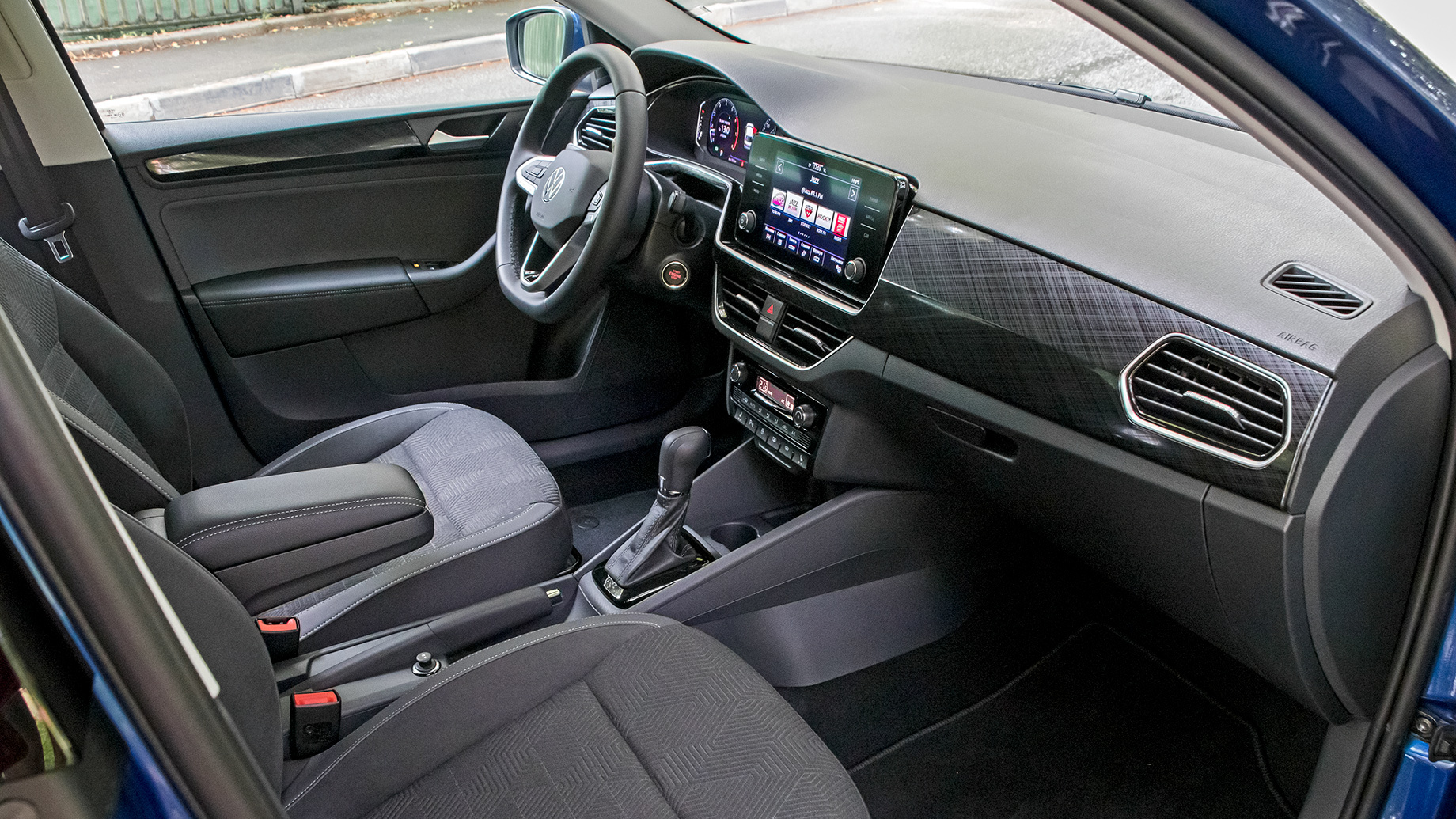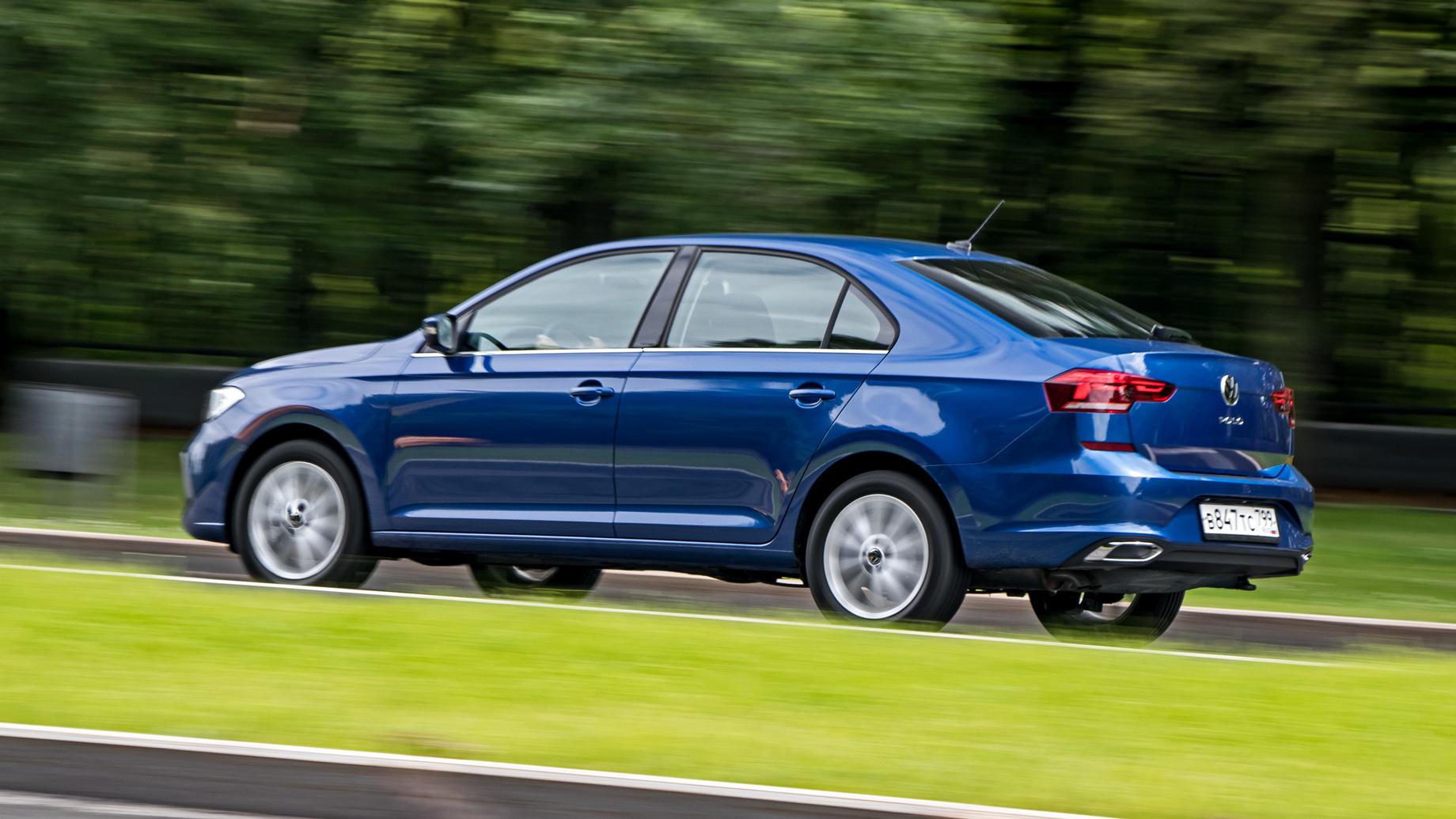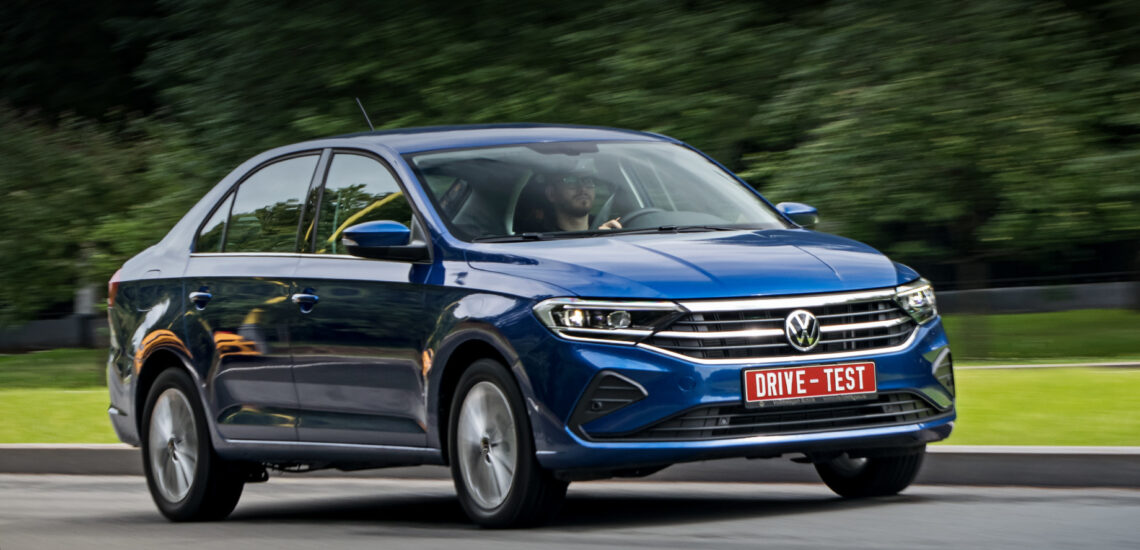The resentment has almost passed. We got used to the idea that instead of the MQB platform, which is relevant in almost the rest of the world, the localized Volkswagen Polo will spend another ten years on the old PQ25 chassis. Now it is a liftback with a huge lifting trunk door, and there are so many changes compared to the old Polo that we can talk about a generational change. But we understand that the new car just became a double of the Skoda Rapid. Appeared in 2012..
The Polo looks respectable, weighty by the standards of the budget segment. The character is emphasized by a massive front end with a swollen radiator grille, richly decorated with chrome. Shiny stripes also appeared under side windows in the top versions. All the front and rear lights are diode, with fog lights integrated into the main ones: these are the diode sections closest to the grille. The Rapid has halogen fog lamps, as well as a halogen high beam in the basic versions. And in the top, both cars replace the usual head light with a lensed one.

The interior looks much more modern than in the old Polo, although only seats and armrests are soft in it. The front panel is its own, not from the Rapid, but a multimedia system is moved up in the same way, according to the trends of the time. The difference from the Skoda is only in the matte screen and slightly different graphics. I am strengthening my opinion that this is the most “lively” and convenient media complex in the class. And while the Rapid is waiting for its turn, the Polo already offers an electronic instrument panel — the same as on the Jetta. Albeit with a minimum of design options, but there is nothing like that from competitors.
The steering wheel with a thick, slightly oval rim and twenty buttons, including a horn, is good. However, the key of the driver’s assistants is fake. The Polo doesn’t have an auto-braking system already installed on the Rapid yet, and pressing on it displays the message “The key doesn’t work”. Volkswagen owners call this steering wheel the one “from the Golf 8”, although the hub plate of the Polo is made cheaper than in the mentioned hatch. The main thing is that the Passat has a similar one so far. It is so pleasant to hold it that there is a feeling of a more comfortable fit. But no, unfortunately, the steering wheel wasn’t moved closer to the seat.
The seats have gained some lateral support when compared with the previous generation. However, the frame is unified with the Rapid, which means falling in in the lumbar area of the front passengers and the lack of adjustment of the support in this place. The transition to the Skoda interior has also improved the properties of the rear seats. There is more space in the knees, L-shaped headrests instead of the classic ones no longer block the view back, there are such luxuries as a central armrest and a hatch in the trunk for long loads. They are also a rarity for budget cars.
Getting into the driver’s seat, you notice frameless wipers and widened mirrors from the Skoda. However, the left one no longer includes a blind spot zone. In general, there are no questions about visibility, and the rear-view camera hiding in the emblem from dirt is a delight. But why is the rear wiper an additional option even for the maximum, packed Exclusive version?

In general, all the differences between the new Polo and the updated Rapid lie precisely in the nuances of the configuration. We will come back to this later, because we need to say a few words about driving sensations. The first test was only 40 minutes, but my impressions were confirmed by the stories of Volkswagen techies. Power units, chassis settings, dimensions of wheels and brakes are the same as in the Rapid.
If we compare it with the old Polo, this means slightly softer springs, but the anti-roll bars are clamped. The ride smoothness has really improved a little: the Volkswagen is less sensitive to all the irregularities, although it still doesn’t let you forget about them. Alas, the main drawback of the PQ25 platform, the lack of power capacity, hasn’t gone away. At the car’s speed of more than 18-24 miles/h, a rubber speed bump punches in the guts so that it seems the stabilizer links will come out through the hood. As before, the Polo is not a fighter outside cities with smooth streets.
Noise insulation has been improved partly due to the fact that the firewall is now covered with the original solid mat. Previously, it was unified with the European Polo, and there were extra holes in it for versions with a right-hand steering wheel. The roof insulation was also strengthened. I didn’t feel any radical changes, especially since I got a car with a 1.4 TSI engine and its characteristic rumble, but I didn’t notice any strong pressure on my ears at speeds up to 55-60 miles/h either. We will wait for full-fledged tests for final conclusions.
The engine can now be started with a button placed in a zone of ignition lock, in the manner of the Skoda: contactless access has appeared in the top versions. The duo of the 125-horsepower turbo engine and the DSG semi-automatic gearbox drives briskly, sensibly — not to compare with the 110-horsepower 1.6 and the automatic transmission, sluggishly and jerkily accelerating the Rapid in our recent test and working under the hood of the Polo definitely in the same way. There are no questions about brakes, at least when using rear disk mechanisms instead of base drums. But while the Skoda is equipped with drums only with a 90-horsepower engine, here they are installed in all non-top version liftbacks, if you don’t pay extra for the disks.

This is where combinatorics begins. It seems that marketers have tried to present the Polo as a more technologically advanced car — therefore, electronic devices, diode fog lights and a retractable camera are offered for it. The Rapid is a safety and practicality bulwark: side airbags and blinds are available in medium versions, as are disk brakes at the rear. Hooks and clamps for cargo in the Skoda trunk (equally huge) don’t require an additional payment. The auto-braking system and sport seats are available only in it. The more or less similarly equipped Polo and Rapid have different prices. The Volkswagen is more expensive.
Personally, I approve of all the changes in the Polo, except for the disappearance of four automatic windows in favor of one driver’s. The liftback is more comfortable and more beautiful than the sedan; the interior no longer causes despondency; it has become more pleasant to be behind the wheel, and it is softer to drive. Alas, the lessons of the Rapid haven’t been fully learned: there are no cup holders, there is nowhere to attach a smartphone, the backs of the front seats are sunken. But the key question is different. Isn’t the love for classic sedans imaginary? If the Polo liftback is accepted no worse than its predecessor, you see, other brands will also stop focusing on three-box cars.
This is a translation. You can read the original here: https://www.drive.ru/test-drive/volkswagen/5f16e030ec05c4421c0000db.html

Published October 20, 2022 • 6m to read






